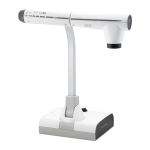Personalized learning is often framed as a welcome “disruption” to old-fashioned, traditional direct instruction – replacing rows of desks in classrooms with open spaces that look like start-up headquarters “optimized for different learning styles.”

These Silicon Valley-inspired aspirations for personalized and blended learning continue even though most large-scale research on personalized learning’s effectiveness is thin and “remains hard to distinguish, harder to implement, and even harder to expand and replicate across schools,” according to RAND researchers studying the issue.
If there is one thing I’d rather not disrupt it would be students’ ability to sustain long-term attention – particularly in the development of their deep-reading brain circuits. I wrote earlier about how I prioritize reading, writing, and discussion in every lesson to build focus in students, and here I want to further explore the importance of cultivating deep attention in the classroom by using technology with great care and intention.
Deep Attention and Deep Reading
“Attention is the gateway to cognition…the filter that selects what things go into your brain for further processing. [Without attention] there is no memory, no recall, no problem solving, no creativity, nothing” – Michael Hobbiss on The Learning Scientists Podcast
In 2007, Katherine Hayles, an English professor at U.C.L.A., hypothesized that a generational shift in cognitive styles was developing between deep and hyper attention. Deep attention is described as the act of concentrating on a single object and single source of information for extended time, whereas hyper attention is the preference for frenetically jumping between different tasks (think task cards), seeking high levels of stimulation (think Kahoot), and a low tolerance for boredom.
Without deep attention, deep reading is under siege. Hayles writes that “in media-rich environments, where reading is a minor activity compared to other forms of media consumption, one would expect that the processes of synaptogenesis would differ significantly from those in media constrained environments in which reading is the primary activity.” In other words, if you don’t use the brain circuit for deep reading, your brain will prune those synapses.
More recently, Maryanne Wolf maps out in Reader, Come Home how the loss of a deep-reading circuit could have profound influences on people’s ability to take other’s perspective and critically analyze text – making us easily susceptible and ever more polarized as a society. Wolf also highlights the underappreciated connection between our reading and depth of thought: “what we read, how we read, and why we read change how we think…there will be profound differences in how we read and how we think, depending on which processes dominate the formation of the young child’s reading circuit.”
Research from the American Psychological Association has found that 1 in 3 U.S. high school seniors did not read a book for pleasure in 2016 and that most middle and high schools students spend between 4-6 hours of their free time on digital media. The switch from deep to hyper attention has clearly taken place, and as educators, we must consider our role in protecting and cultivating our students’ ability to sustain deep attention.
Personalized Learning or Direct Instruction in the Classroom?
While Direct Instruction (DI) [or more specifically explicit instruction] is often erroneously cast as old-fashioned and in need of being replaced by more personalized learning, the truth is that DI is centered around student practice, a large number of questions, and various checks for student understanding. It is highly engaging for the whole group and simultaneously student-centered. This constant interaction and feedback between teacher-student and student-student through shared dialogue is entirely missing in a personalized learning environment with 1:1 technology.

Carl Hendrick writes in What Does This Look Like in the Classroom that “building deep, conceptual understanding and higher-order thinking requires intensive teacher-student interactions, and technology sometimes distracts from this valuable human engagement.” Certainly, the quality of discussion and peer engagement is altered dramatically in a classroom that becomes ever more personalized and device-based. Hendrick also writes in a recent post that while there is a place for technology in the classroom, its adoption should be guided by the tacit knowledge of teachers who spend every day in the classroom, not by “edupreneurs” and “thought leaders.”
It’s not just teachers who are wary of personalized learning’s effects on the social fabric of the classroom. In a letter to Mark Zuckerberg, students at a New York high school wrote that the Summit Learning Platform supported by the Chan-Zuckerberg Initiative and implemented in their school required “hours of classroom time sitting in front of computers….students feel as if they are not learning anything….[but] most importantly, the entire program eliminates much of the human interaction, teacher support, and discussion and debate with our peers that we need in order to improve our critical thinking.”
How I Use Technology With Great Care and Intention in the Classroom
The majority of the work put in front of my students is either in workbooks and/or double-sided pages that allow me to, as Lemov recommends in TLAC 2.0, minimize distractions by making all lesson materials available in one place.
However, I certainly do utilize technology in my classroom but do so with care and intention. Before incorporating technology, I follow the advice of Greg Ashman who writes in The Truth About Teaching “when examining whether to introduce technology, we need to be clear about what we intend our students to learn as a result…technology is potentially distracting and can cause students to think about a whole range of factors outside the intended learning.”
To end, here are four relatively simple but effective ways I use technology to enhance instruction in my classroom, as guided by research and best practice.
- Use of document camera (visualizer) and projector. The visualizer/document camera is the foundation of effective, authentic, whole-group instruction and feedback when I teach. If the internet is down or if anything happens to my laptop, I always have a document camera and projector to fall back on.

- Building background knowledge. I use daily news, podcasts (Brains on! Forever Ago, and SmashBoomBest are fantastic), and documentary series to squeeze the most learning into each school day – especially when students are drained at the end of the day. Why? Research shows the best way to boost reading comprehension is by building background knowledge and vocabulary in history, science, and the arts.
- Math fluency exercises. This use of 1:1 technology seems to be supported best by research. A Summary of the 2017 research paper “Education Technology: An Evidence-Based Review,” published by the National Bureau of Economic Research found that computers and internet access alone don’t boost learning but that some adaptive math software shows promise. This is a good example of technology enhancing good teaching, not replacing it. I also save this for the end of the day.
- Typing practice and word processing skills. After students have completed hand-written notes, graphic organizers, and opportunities to write and revise, I think it is valuable near the end of the writing process for students to “publish” their work and practice developing their word processing and typing skills.
This post was written by Jon Gustafson and originally ran on his “Mr. G Mpls” Blog, follow him on Twitter @MrGmpls










